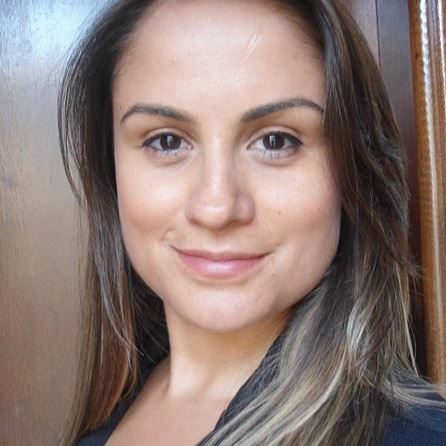
The 2019 novel coronavirus (2019n-CoV), like MERS and SARS, belongs to a family called coronaviruses that may be amenable to an approach to create a single vaccine effective against several infectious diseases.
Historically, vaccines have been developed by isolating, inactivating, and injecting viruses, bacteria or pieces thereof into the body to stimulate an immune response.
Recently, a more rational design approach has enabled the design of new candidate vaccines with high precision. It’s a potential game changer in vaccine development.
A group of researchers in the United States is using synthetic biology tools to develop a universal coronavirus vaccine. Using these tools, scientists redesign and construct artificial organisms to develop new abilities. They manipulate strands of DNA, insert them into an organism's genome, and create a new artificial DNA molecule designed for specific purposes.
Before they begin working with DNA, scientists at the University of Washington's Institute for Protein Design use a computer program to develop new vaccines against several viruses, including coronavirus. This technology allows them to design new vaccine candidates from scratch, including coronavirus antigens. These antigens are recognized by the human immune system, which then produces antibodies to help the body fight off the invader. When used in a vaccine, these antigens stimulate the body to create immunity to the disease.
Coronaviruses (CoV) are a large group of viruses that can infect humans and cause respiratory illness with a wide range of symptoms, ranging from the common cold to more severe diseases such as Middle East Respiratory Syndrome (MERS-CoV) and Severe Acute Respiratory Syndrome (SARS-CoV). The 2019 novel coronavirus (2019n-CoV) causes an infectious disease called COVID-19.
This highly contagious disease has been declared a global pandemic disease by the World Health Organization (WHO). Although COVID-19 has a low mortality rate, meaning that most cases are mild, it spreads easily, so the minority of cases that are severe can still easily overwhelm health care systems.
To add perspective, the MERS virus has the highest mortality rate. One of three people infected die, typically because of a respiratory illness. However, it has a low transmission rate and since 2012, there have been about 2,500 cases worldwide. It is a lethal virus but doesn’t ostensibly spread to person-to-person. On the other hand, SARS virus is less deadly than MERS with a mortality rate of around 10 per cent, but much more contagious than MERS. Back in 2003, there were about 8,000 cases of SARS and about 800 deaths worldwide.
One of the worst pandemics in recent history was the 1918 Spanish flu, which killed about two to three per cent of its victims, or at least 50 million people worldwide. COVID-19 mortality has been estimated to be around 1.6 per cent. This disease has many similarities with influenza, since both are contagious diseases with low mortality rates. However, mortality for COVID-19 appears higher than the 2009 H1N1 pandemic that killed around a tenth of a per cent of affected people worldwide.
One hundred years after the Spanish flu, the world is a much more populous and different place. We are much more prepared for infectious diseases, but we are able to connect to each other around the world within hours via air travel making disease transmission easy and control of these diseases globally challenging.
The University of Washington researchers believe the new approach combining computational modeling and synthetic biology will help develop effective vaccines against all three coronaviruses, including SARS-CoV, MERS-CoV, and 2019n-CoV.
Using this strategy, scientists attached coronavirus-specific antigens to a spherical protein nanoparticle that looks like a virus to the body’s immune system, and as such stimulates antibody responses. These nanoparticles are now being tested in mice to evaluate immune responses in vivo.
The main advantages of having a nanoparticle as the core of a vaccine is that it can be used to boost immune responses and can be designed to include antigens from several viruses. This makes one vaccine capable of fighting multiple infectious diseases. It also makes the vaccine tolerant of heat, reducing the need for refrigeration - a great feature for vaccines that are used in tropical resource-poor countries.
Synthetic biology may offer a universal coronavirus vaccine that can be quickly modified to combat future mutated strains, but such vaccines remain in the preliminary phases and more traditional vaccines won't be available for months.
In the meantime, it will be up to us to keep washing our hands, avoiding crowded places, and doing what we can to control COVID-19. More info about the virus and what we can do to protect ourselves can be found here: https://www.who.int/emergencies/diseases/novel-coronavirus-2019
References:
By: Alyne Teixeira

Alyne Teixeira completed her undergraduate degree in Industrial Pharmacy and her master’s degree in Biosciences and Technology of Bioactive Products in Brazil. She is currently in her last year of her PhD in Biomedical Engineering at Dalhousie University. Her doctoral research consists of developing a new pre-clinical platform to identify potential vaccine formulations. She holds a Scotia Scholars Award and a Nova Scotia Graduate Scholarship from the Nova Scotia Provincial Government. In 2019, she received the Allan Marble Prize for excellence in research in the field of Biomedical Engineering. As a pharmaceutical scientist with 10+ years of experience in both industry and academia, she has conducted many research projects and presented her work at conferences across Canada and abroad. Alyne is passionate about connecting people and science, and she is actively involved in organizing science events and writing research articles to broad audiences.
For more details, please check her Linkedin profile: https://www.linkedin.com/in/alyne-teixeira/
She also has a Twitter account: @AlyneGTeixeira
